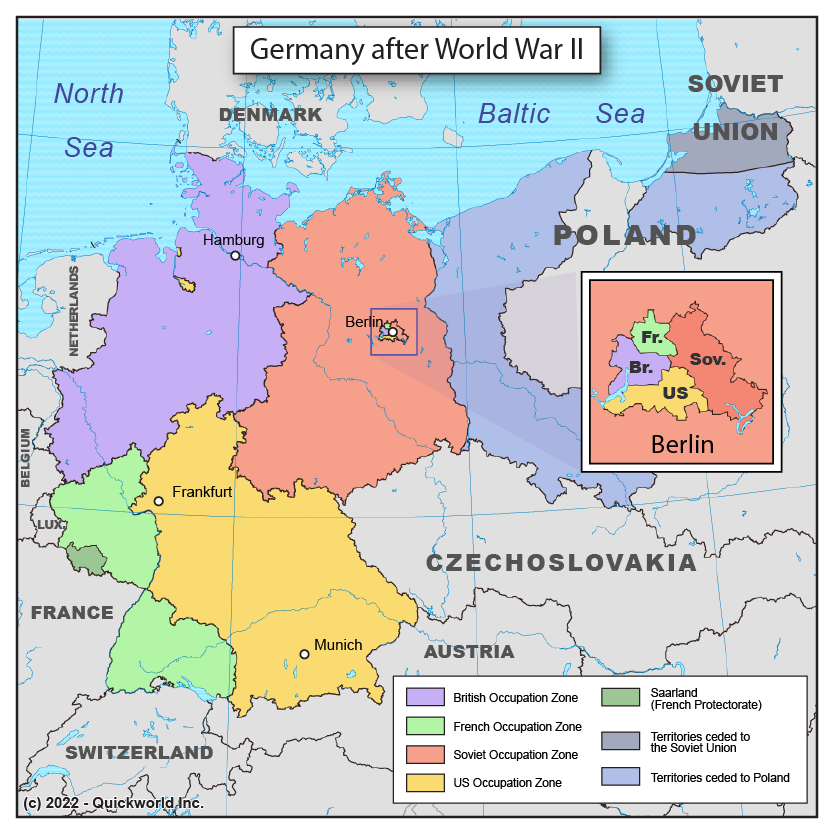Our World War II Series takes us to the post-war border modifications impacting Germany.
As the first aggressor and ultimate loser of the war, Germany lost considerable territory, mostly in the East. All its annexations starting from the 1938 Austrian Anschluss were declared void by the May 8, 1945 armistice, but the Potsdam Conference of August 1945 also confiscated lands that had been German for centuries: Silesia and Pomerania were transferred to Poland, while East Prussia was divided between Poland and the USSR, which created a new Russian Oblast around the City of Kaliningrad - formerly Koenigsberg. In the West, the Basin of the Saar became a French Protectorate.
What was left was split into five distinct areas: the four Powers (USA, USSR, Britain and France) each had an administration zone and Berlin, the German capital, was under joint administration, with four separate quarters.
This new world order did not last long, as animosity between the Western block and the USSR led to confrontation in Berlin in 1948. A blockade imposed by the USSR was forced by the allies Berlin Airlift, which led to a status quo that was going to last until 1990. The three Western administration zones joined to create West Germany (Officially the Federal Republic of Germany) in 1949, while the Soviet Zone became East Germany (officially the German Democratic Republic) the same year. The three Western quarters of Berlin united into a single municipality that was de facto under the administration of West Germany.
More on West Germany and East Germany.
Germany in 1945


